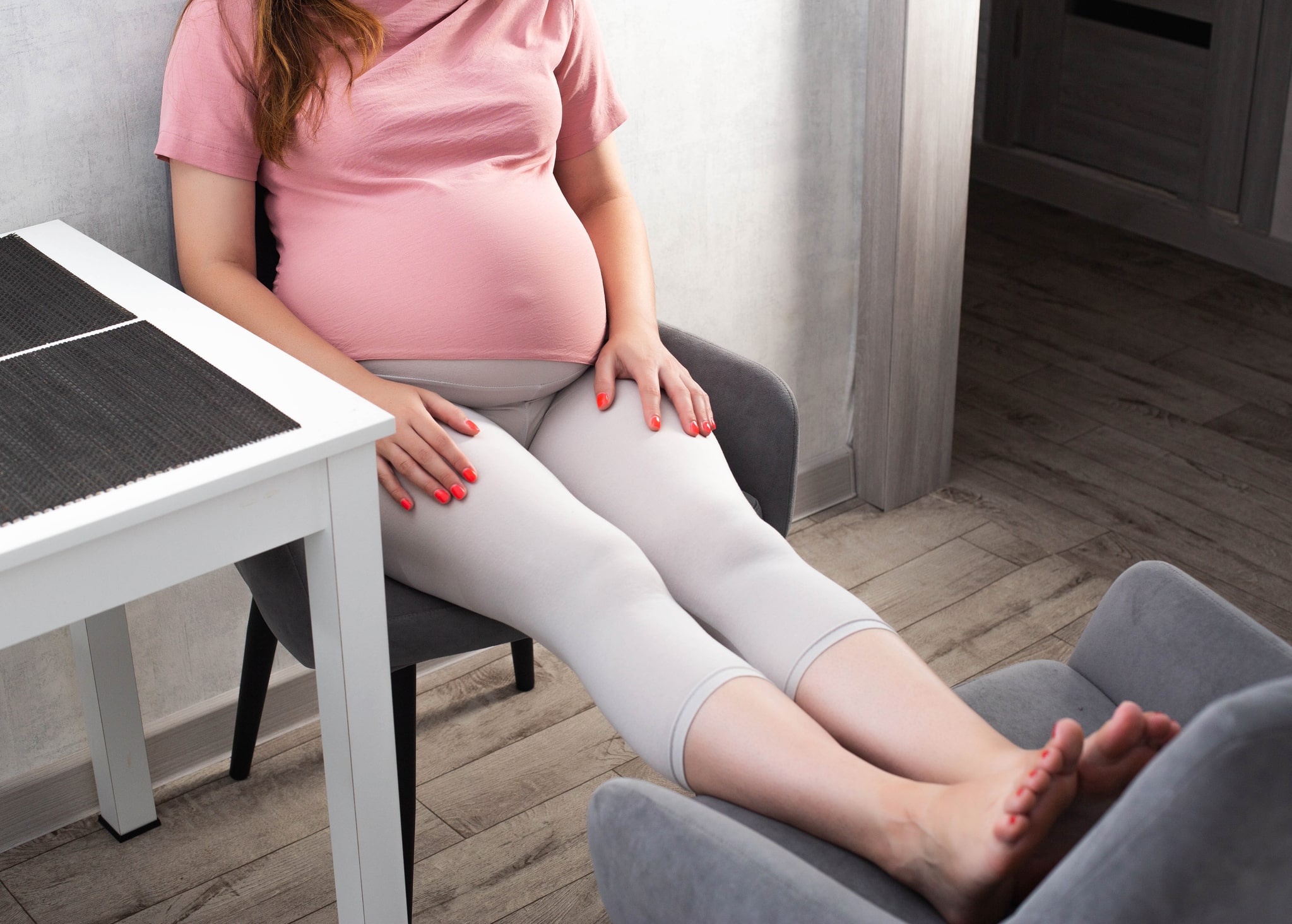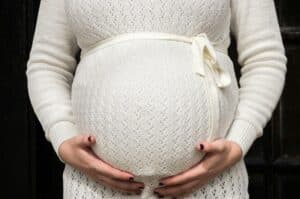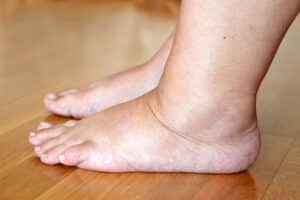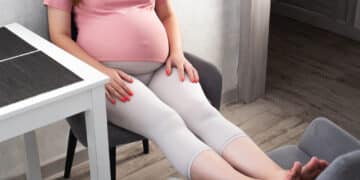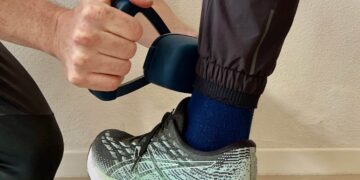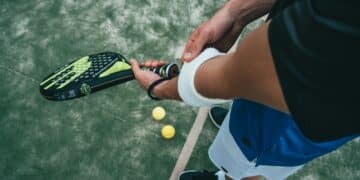Lymphatic drainage during pregnancy for swollen legs
Pregnancy and swollen legs? Try lymphatic drainage!
Lymphatic drainage during pregnancy for your legs. Water retention during pregnancy is normal to a certain extent. However, if this makes you feel uncomfortable, it is advisable to consult a specialist. Why does this water retention occur and how can a Lymphatic drainage help during pregnancy? We will be happy to inform you!
Is water retention during pregnancy a cause for concern? Water retention of up to seven liters is considered normal during pregnancy. This extra water in the body is necessary to ensure a constant exchange of fluids with your unborn child via the placenta. This makes the skin appear firmer and small dimples may appear when pressure is applied to the feet and lower legs.
Why are my legs suddenly so swollen and heavy? Hormone levels change during pregnancy. Increased oestrogen levels lead to more fluid leaking from the veins into the surrounding tissue and accumulating there. This is known as lymphatic fluid or oedema.
This lymphatic fluid and the blood in our veins and arteries flow through the entire body back to the heart. During this time, the growing baby needs more space in the uterus and puts pressure on the pelvic vessels. This inhibits the outflow of blood and lymphatic fluid from the legs. Together with the force of gravity, this mainly leads to swollen legs.
How can lymphatic drainage help during pregnancy?Lymphatic drainage is used for pregnancy oedema in a similar way to conventional lymphoedema. The main difference is that abdominal drainage is omitted in order to minimize the risk of premature labour. Your therapist will give you comprehensive advice on this. You can find more information in our article on leg lymphatic drainage.
What is lymphatic drainage? Lymphatic drainage is a manual technique that aims to promote the drainage of accumulated lymphatic fluid and relieve swelling. This therapy involves gentle, rhythmic movements that support the lymph flow. Lymphatic drainage can be performed both by professionals and at home. The latter is particularly useful to maintain the effects of the sessions.
What can I do at home? From the second half of pregnancy, we recommend wearing class two compression stockings. These not only help with water retention and oedema, but also prevent thrombosis and varicose veins. More severe symptoms can be alleviated by lymphatic drainage. You can also do light exercises at home to promote lymph flow and elevate your legs to reduce swelling.
Women who already suffered from lymphoedema before pregnancy have an increased risk of it worsening due to the physical changes during pregnancy. In such cases, a regular manuel lymphatic drainage and compression stockings should be worn.
Before and after results
Patients often report significant improvements after leg lymphatic drainage. This can be seen in the reduction of swelling and a general increase in well-being. Through continuous treatment and the Self-help tips for at home the condition can be stabilized and often improved in the long term. Water retention is normal to a certain extent. Lymphatic drainage during pregnancy is therefore a good way to improve your well-being.
What is abnormal pregnancy edema? Pathological pregnancy edema usually occurs in conjunction with gestosis in late pregnancy (Gestosis: pregnancy-related symptoms with no known cause). Affected women often suffer from kidney problems and high blood pressure. This leads to protein-poor edema throughout the body, whereby up to 25 liters of fluid can be stored (for comparison: normal pregnancy up to seven liters). In such cases, immediate treatment with manual lymphatic drainage and compression stockings is necessary. Medication is not usually used. If you are suspected of having pathological pregnancy edema, please contact your gynecologist immediately.
Lymphatic drainage nearby. To ensure optimal treatment, look for trained therapists who offer lymphatic drainage in your area. Professional lymphatic drainage ensures that the techniques are applied correctly and can give you valuable tips for self-treatment at home.
In addition to these measures, it is important to contact your gynecologist immediately if you notice any signs of problematic pregnancy edema.
Here you can find more information on our page about Manual lymphatic drainage (MLD): Lymphatic drainage
Clarifying questions and answers:
During pregnancy, hormone levels increase, especially oestrogen levels. This change causes more fluid to leak from the veins into the surrounding tissue and accumulate there, which is known as lymphatic fluid or edema. In addition, the growing baby puts pressure on the pelvic vessels, which impedes the drainage of venous and lymphatic fluid in the legs and causes swelling.
Normal water retention during pregnancy is manifested by swollen feet and lower legs, tighter skin and small dents in the affected areas when pressure is applied. This swelling is not dangerous and is caused by the increased amount of fluid in the body, which is necessary for the exchange of fluids via the placenta.
Normal water retention is usually limited to the feet and lower legs, moderate and not painful. Pathological water retention, as occurs with pathological pregnancy edema, is more extensive, affects the entire body and occurs together with symptoms such as high blood pressure and kidney problems. These require immediate medical treatment. If you notice any signs of pathological edema, you should contact your gynecologist immediately.
Class two compression stockings should be worn from the second half of pregnancy to prevent water retention, oedema, thrombosis and varicose veins. They are particularly helpful for women who already suffered from lymphoedema before pregnancy.
Lymphatic drainage helps to drain the accumulated lymph fluid and reduce swelling in the legs. Manual techniques are used to gently remove the fluid from the tissue and support circulation. This improves well-being and mobility.
During pregnancy, deep abdominal drainage is not performed in order to minimize the risk of premature labour. The therapist will inform you in detail about the adapted treatment and ensure that the lymphatic drainage is carried out gently and safely.
Other measures include wearing compression stockings, regular light physical activity, elevation of the legs and adequate hydration. These measures promote blood circulation and help to reduce swelling.
Categories
- Osteoarthritis
- Leg
- Dry needling
- Elbow
- Foot
- Balance
- Hand
- Hip
- Pine
- Knee
- Headache
- Muscle pain
- Myofascial therapy
- Neck pain
- Physiotherapy Höngg
- Physiotherapy Wipkingen
- Physiotherapy Zurich
- Rehabilitation
- Back pain
- Shoulder arm
- Shoulder pain
- Pregnancy
- Dizziness
- Sports
- Trigger points
- Lower leg
- Injury prevention
- Wade
- What to do?
- Wound healing
Lymphatic drainage during pregnancy
Pregnancy and swollen legs? Try lymphatic drainage! Lymphatic drainage during pregnancy for...
Read moreStrength measurement - We monitor your therapy success
Measuring strength in physiotherapy: A key to targeted and effective treatment The importance of measuring strength...
Read moreTennis elbow or golfer's elbow? Causes, symptoms and treatment
Tennis elbow can severely restrict your mobility and cause unpleasant pain in the elbow. This...
Read moreNeck pain - holistic therapy with trigger point therapy and active exercises.
Neck pain? Get active and free yourself! Do you know the feeling of waking up in the morning and feeling like a robot?
Read more
